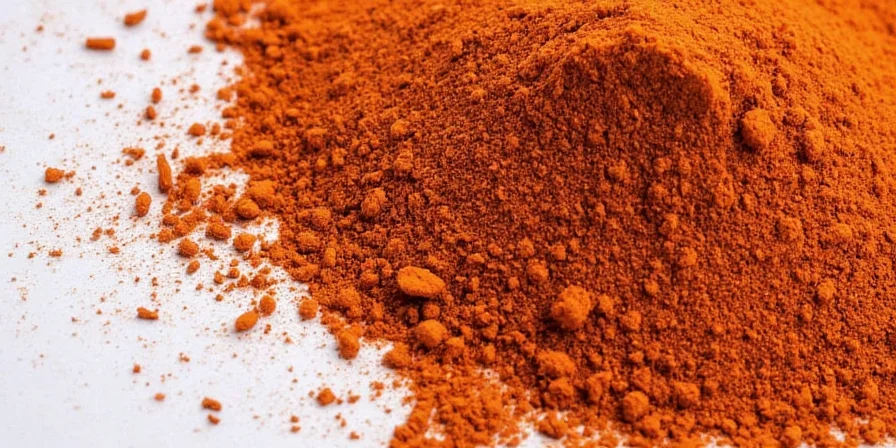Tamarind powder is a versatile cooking ingredient made from dried and ground tamarind pulp, offering a sweet-sour flavor that enhances dishes across Indian, Thai, Mexican, and Caribbean cuisines. Unlike tamarind paste, it's shelf-stable for 2-3 years and dissolves easily in liquids, making it perfect for soups, sauces, and marinades.

Top 5 Practical Uses for Tamarind Powder in Home Cooking
- Instant marinade enhancer: Mix 1 teaspoon tamarind powder with 3 teaspoons warm water to tenderize meats or tofu in 30 minutes
- Authentic pad Thai base: Add 2 teaspoons to your sauce for the signature tangy flavor without hunting for tamarind paste
- Quick chutney maker: Combine with sugar, salt, and chili for instant dipping sauce (ratio: 2 parts powder, 3 parts sugar, 1 part water)
- Rice dish secret: A pinch elevates lemon rice, biryani, or pulao with complex sour notes
- Cocktail booster: Replace vinegar in shrubs with tamarind water (1:3 powder to water) for sophisticated sweet-sour balance
| Feature | Tamarind Paste | Tamarind Powder |
|---|---|---|
| Form | Thick, sticky block or jarred paste | Dried, powdered form |
| Shelf Life | Up to 1 year unrefrigerated | 2–3 years if stored dry |
| Flavor Intensity | Richer, more concentrated | Slightly milder unless reconstituted |
| Best For | Daily cooking, authentic recipes | Occasional use, travel, small batches |
| Reconstitution | Ready to use | 1 tsp powder + 3 tsp warm water = 1 tsp paste |

Simple Storage Solutions That Prevent Clumping
Store tamarind powder in an airtight container with a silica packet in a cool, dark place. In humid climates, refrigeration extends freshness beyond two years. If clumps form, spread powder on a baking sheet and dry at 150°F (65°C) for 20 minutes.

Smart Substitutes When You're Out
- For sourness: Mix 3 parts lime juice with 1 part sugar (tamarind's sweet-sour profile)
- For Indian dishes: Amchur (mango powder) in equal amounts
- For barbecue sauces: Balsamic vinegar (use 75% of tamarind amount)
Safety Notes Every Cook Should Know
- Naturally gluten-free, but check labels for processing facility contamination risks
- Limit intake if managing acid reflux or dental erosion concerns
- Culinary amounts are safe during pregnancy (therapeutic doses require medical consultation)
Frequently Asked Questions
Can I substitute tamarind powder for paste in recipes?
Yes. Mix 1 teaspoon tamarind powder with 3 teaspoons warm water to replace 1 teaspoon tamarind paste. Let it sit for 5 minutes before using.
Why does my tamarind powder form lumps?
Lumping happens when moisture gets in. Store with silica gel in an airtight container. To fix clumps, spread on a baking sheet and dry at 150°F (65°C) for 20 minutes.
What's the best way to use tamarind powder in curry?
Add 1-2 teaspoons to the curry base when sautéing onions and spices. The heat helps release its flavor without making the dish overly sour.
How long does reconstituted tamarind last?
Mix with water and store in the fridge for up to 2 weeks. Freezes well for up to 3 months in ice cube trays.
Is tamarind powder healthier than paste?
Nutritionally identical when reconstituted. Powder has slight advantage for portion control and longer shelf life without preservatives.
Complete Usage Guide for Common Dishes
| Dish Type | Amount Per Serving | When to Add | Pro Tip |
|---|---|---|---|
| Pad Thai | 1.5 tsp | With sauce ingredients | Balance with 1 tsp palm sugar |
| Indian Curry | 1 tsp | After onions soften | Toast with spices for deeper flavor |
| Mexican Sauce | 2 tsp | When simmering | Combine with chipotle for complexity |
| Rice Dishes | 1/4 tsp | With cooking water | Use sparingly - enhances without dominating |
| Cocktails | 1/2 tsp | Shake with other ingredients | Pair with mezcal or rum |

Beyond Cooking: Unexpected Household Uses
- Natural metal cleaner: Mix with flour to polish copper and brass (1:1 ratio)
- Plant fertilizer: Dilute 1 tsp in 1 gallon water for acid-loving plants
- Homemade playdough: Adds flexibility to DIY dough recipes

Why Tamarind Powder Is Worth Having in Your Pantry
Tamarind powder solves common cooking problems: it adds complexity to dishes without requiring specialty ingredients, extends shelf life of homemade sauces through natural preservation, and provides consistent flavor in small quantities. Unlike fresh tamarind, it requires no preparation and works in any climate. For home cooks wanting to expand their flavor repertoire, it's one of the most versatile souring agents you can keep on hand - transforming simple ingredients into restaurant-quality dishes with just a teaspoon.











 浙公网安备
33010002000092号
浙公网安备
33010002000092号 浙B2-20120091-4
浙B2-20120091-4